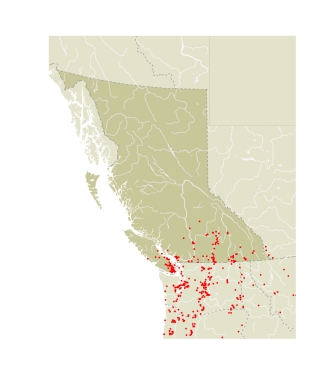The Western Elfin flies from mid-April to early June. The eggs are laid in the second half of April and hatch quickly; mature larvae pupate by early June on the coast (GAH). Hardy obtained oviposition in the lab on Arctostaphylos uva-ursi, and the hatched larvae fed on the surface of the leaves. Hardy also found larvae on salal, Gaultheria shallon, and Arbutus menziesii. On Vancouver Island, oviposition was observed on a salal flower and the larva reared to maturity by A.G. Guppy (pers. comm.). The pupa stays dormant and is the overwintering stage. On the coast, the Western Elfin is usually associated with salal (Guppy 1956; JHS) and arbutus (Arbutus menziesii) (FIS). Jones (1938) records it on ocean-spray (Holodiscus discolor). In the interior the Forest Insect Survey has reared it on Ceanothus sanguineus at Adams River. It has also been reared on apple at Victoria (Jones 1939) and at Salmon Arm by Dennys (CNC). The interior populations appear closest to California populations, which also feed on Ceanothus sp. (Powell 1968).
|
|
